A Shield Against the Cold: an 1820s Winter Bonnet
Today, December 21st, officially marks the beginning of winter and, consequently, the ushering in of cold, frigid weather. When you woke up this morning, you likely consulted the day’s forecast and planned an outfit best suited for the chilly weather. One accessory often worn during this season is a hat – useful for keeping your ears warm and blocking the onslaught of ice-cold winds. Housed in the museum's Fashion Archives is an 1820s quilted winter bonnet that served as the perfect wintertime accessory!
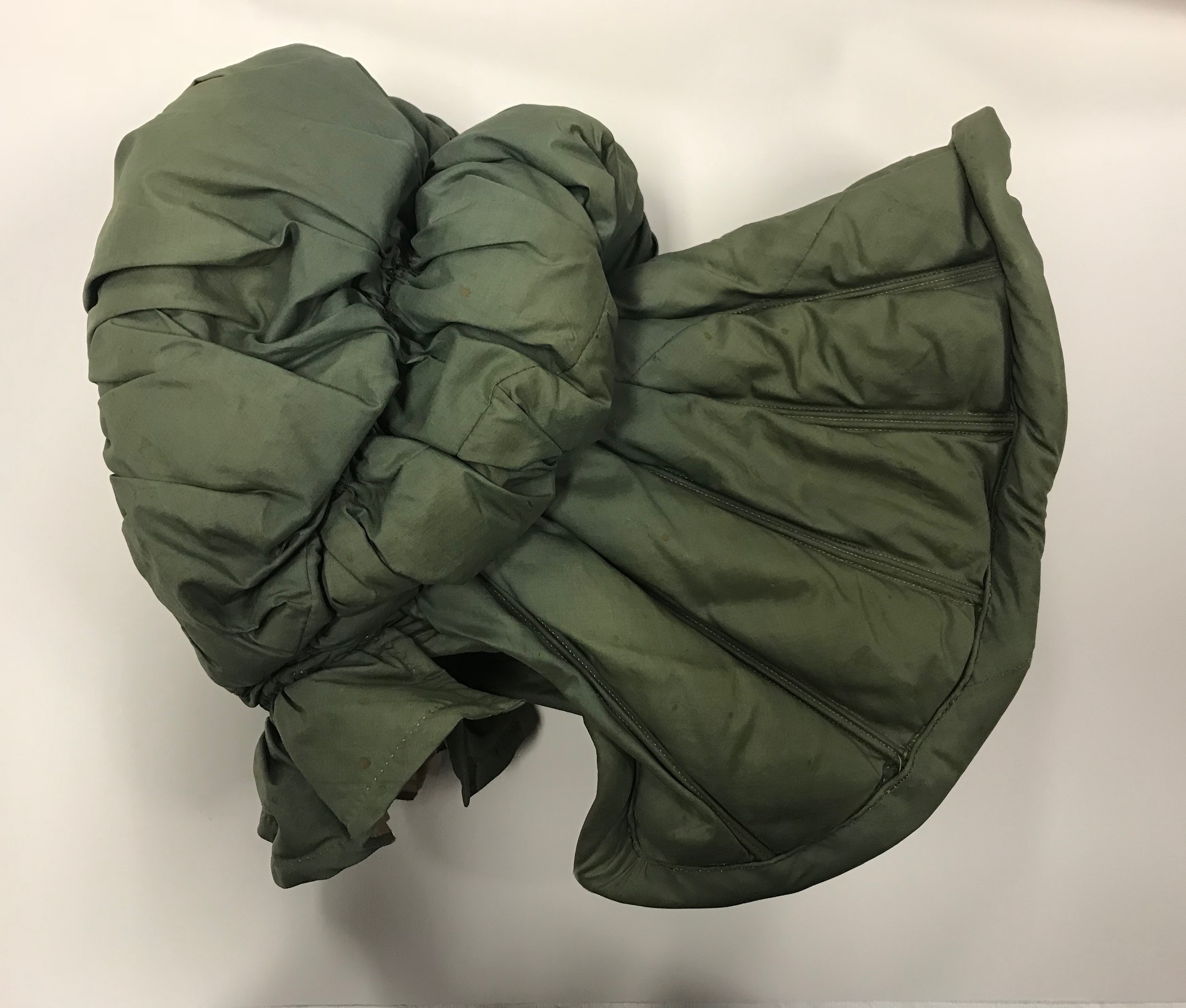 |
| Silk Bonnet, Probably American, 1820s, Gift of Mrs. Harold Holmes Wren, 1953.80.1, Maryland Historical Society. |
Constructed from a green silk for its exterior fabric, the bonnet would have been a natural windbreaker because of silk's tight weave. Additionally, because this bonnet is quilted, there is a layer of wool batting that provided an extra layer of defense against the weather.
One of the most defining features of this bonnet is the structure itself. Also known as a “poke” or “drawn” bonnet, this accessory featured an elongated brim supported by hoops of cane, a wooden material that can be seen in an exposed section of the headpiece's interior. When a woman turned her head, such an exaggerated silhouette obscured and hid her visage, which can be better visualized in fashion plates from the period. Hats illustrated in a fashion plate from Corriere delle Dame also showcase the unique shapes of these poke and drawn bonnets.
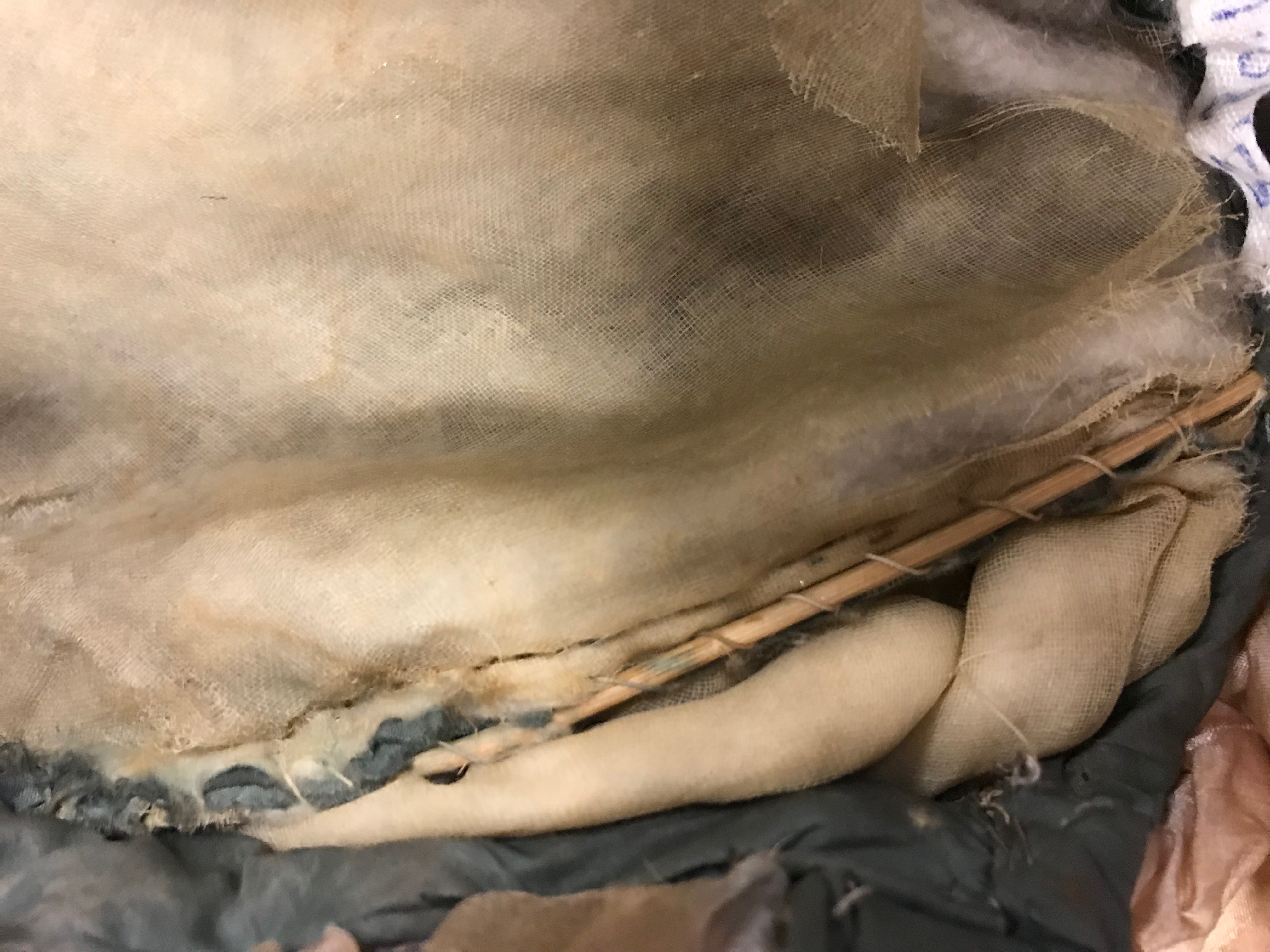 |
| Exposed caning |
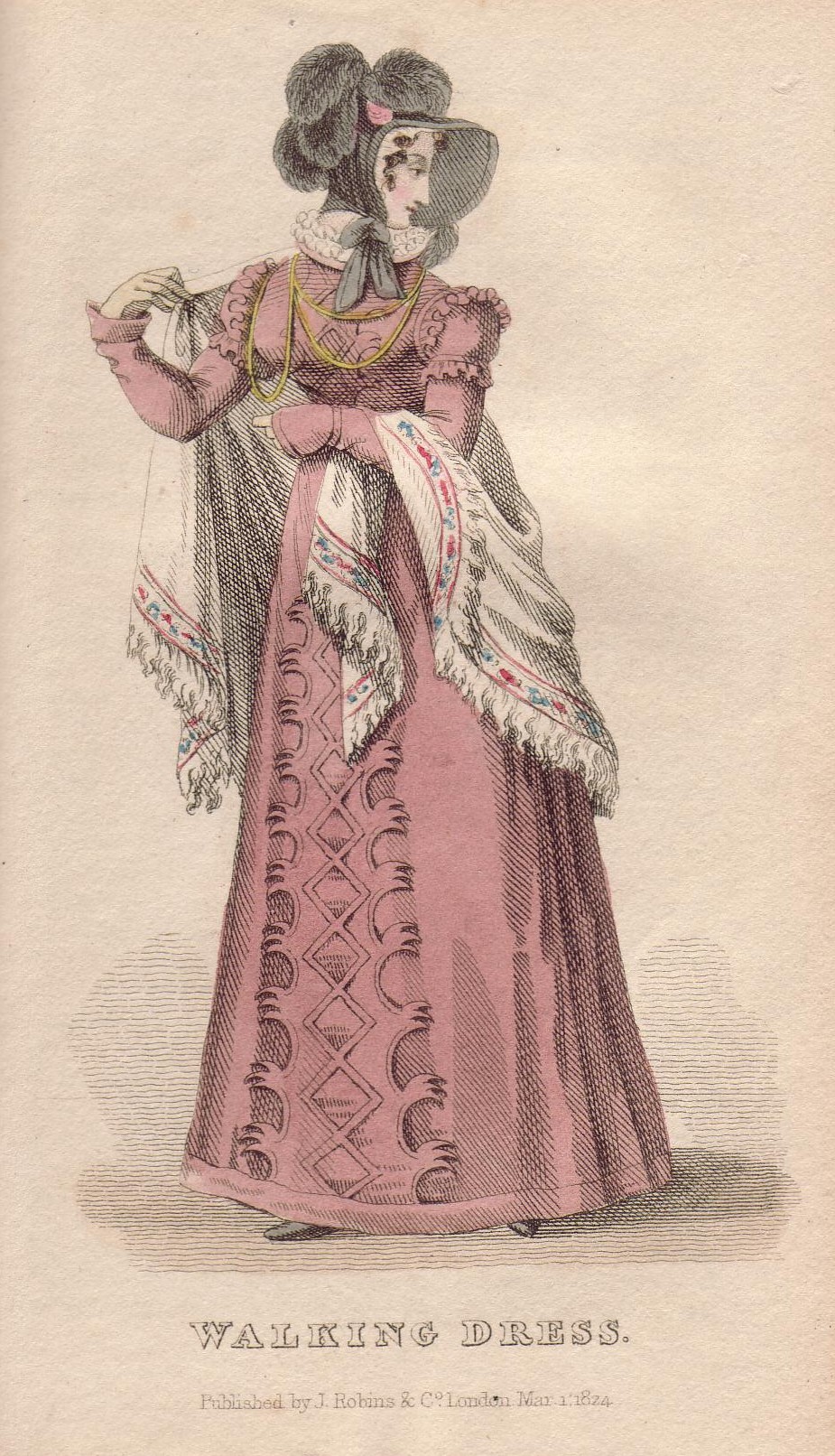 |
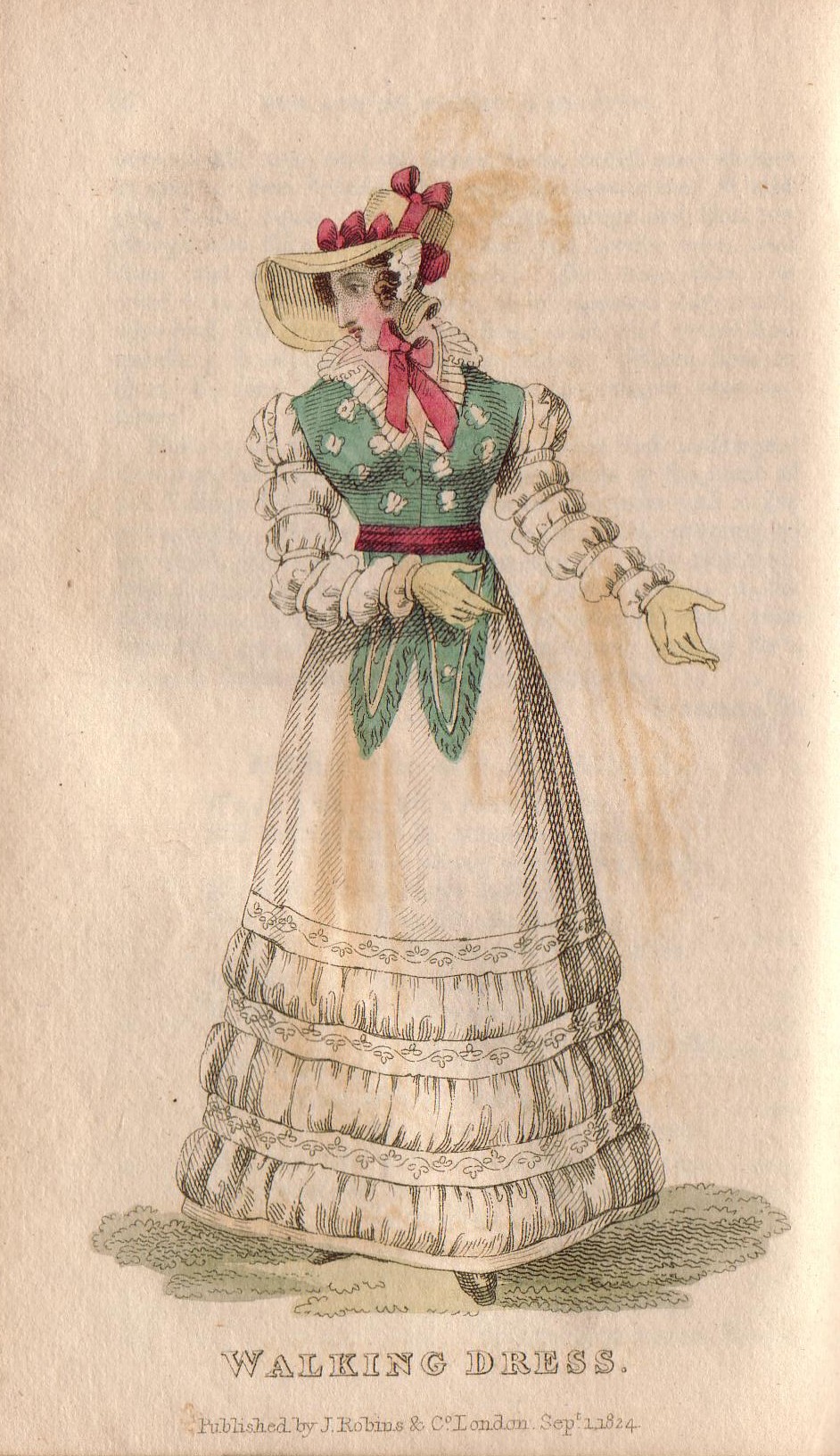 |
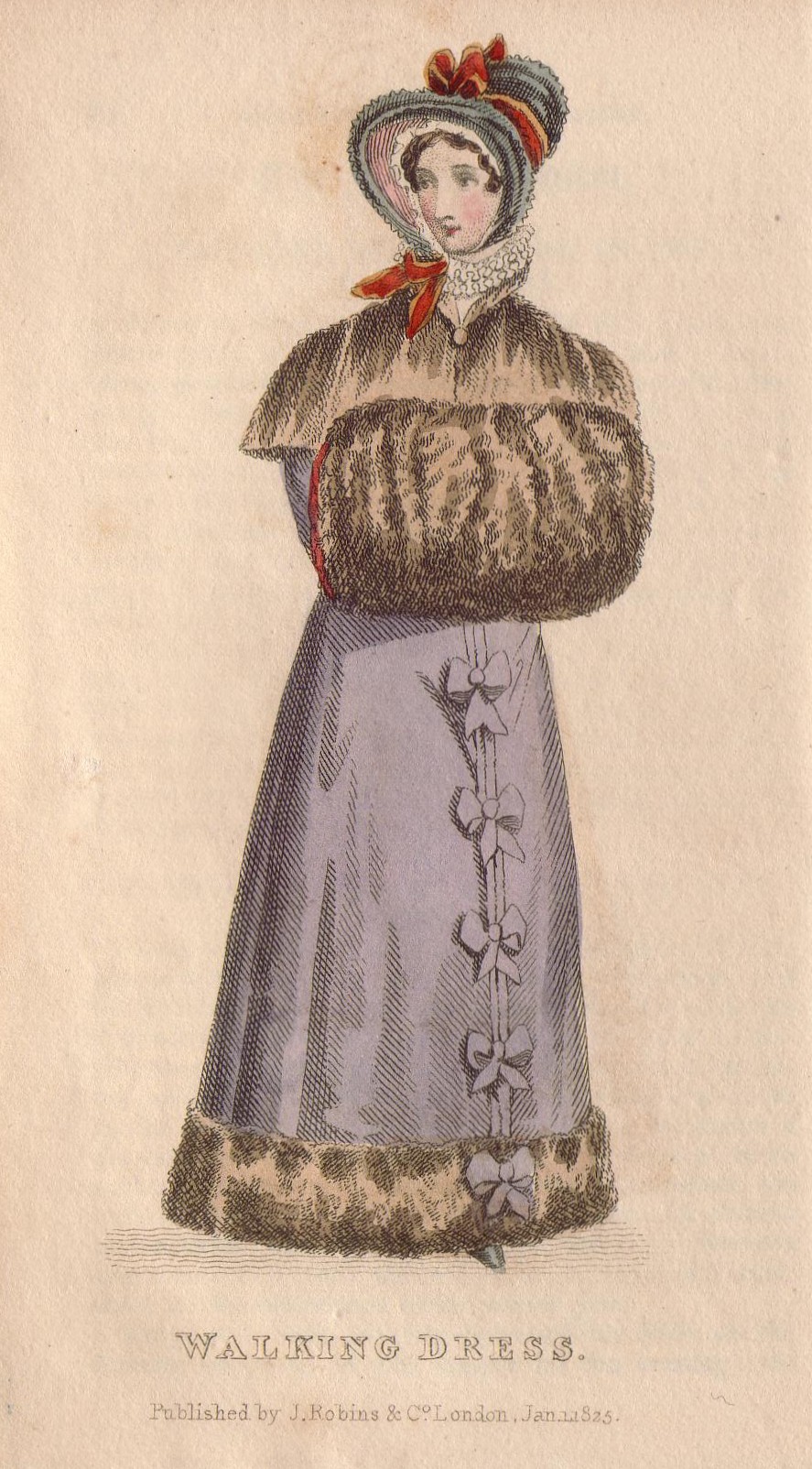 |
| March 1824, Ladies' Pocket Magazine | September 1824, Ladies' Pocket Magazine | January 1825, Ladies' Pocket Magazine |
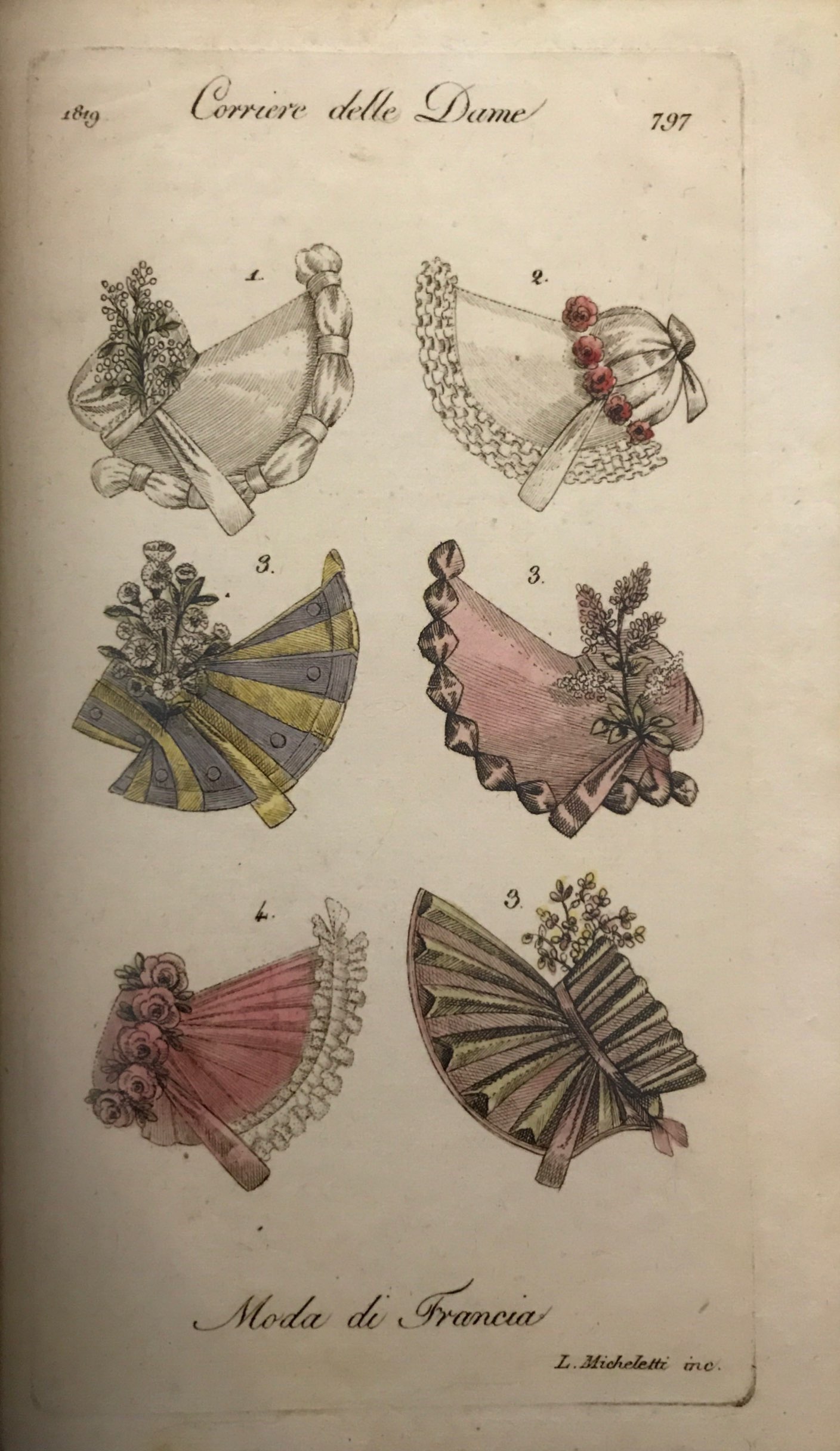 |
|
1819, Corriere delle Dame. Pulled from Fashion Plates: 150 Years of Style, page 106. |
These drawn bonnets resembled the 18th century calash, a completely collapsible headpiece that protected a woman's elaborate coiffure from damage. As described in April Calahan's book, Fashion Plates: 150 Years of Style, the word calash is derived from the French word calèche, or the hood of a French carriage. Similar to the hood of a carriage, the headpiece's silk fabric was ruched along a collapsible cane support structure. Drawn or poke bonnets, such as the museum's, did not fold upon itself, but the calash continued to be worn well into the nineteenth century.
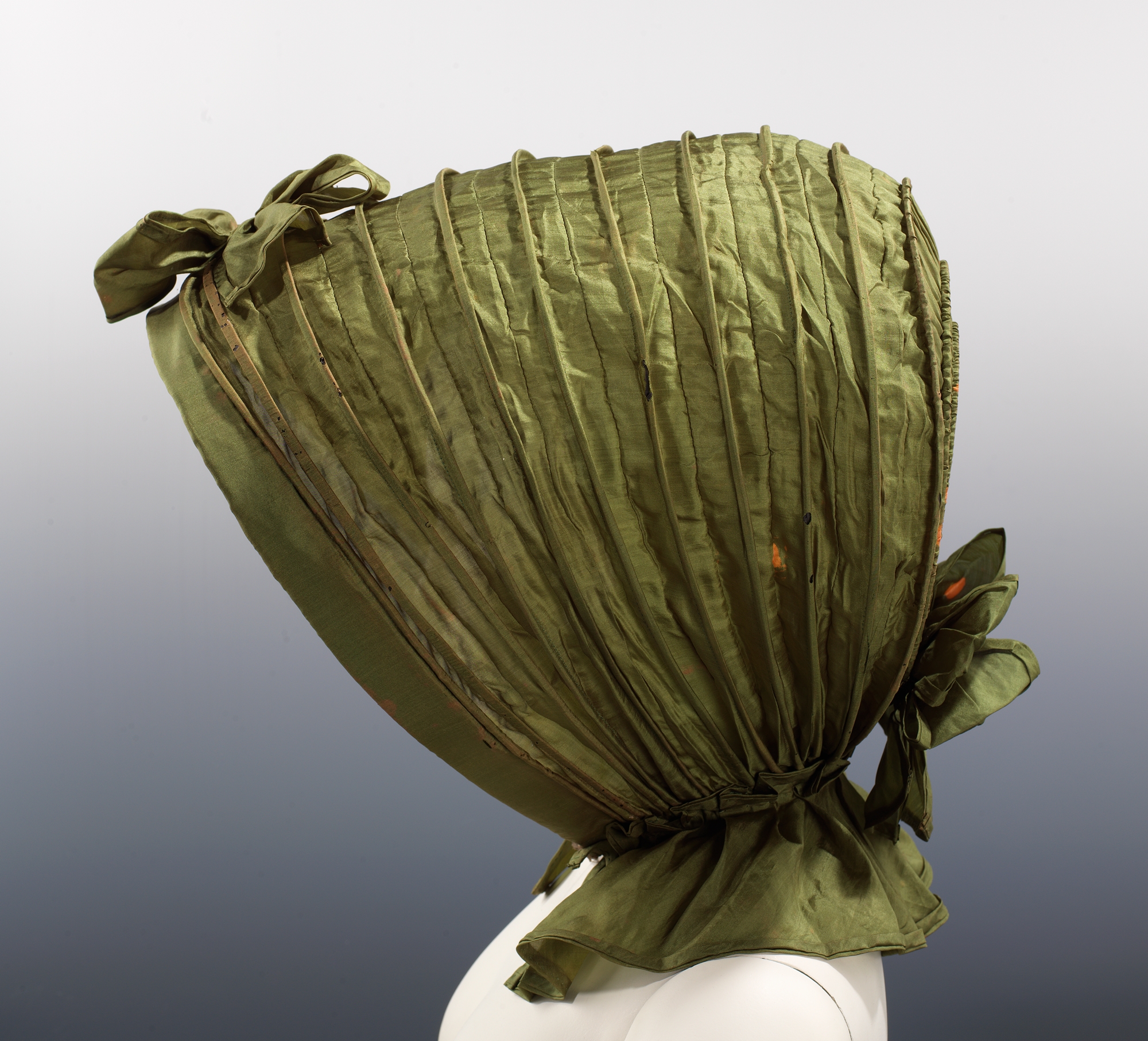 |
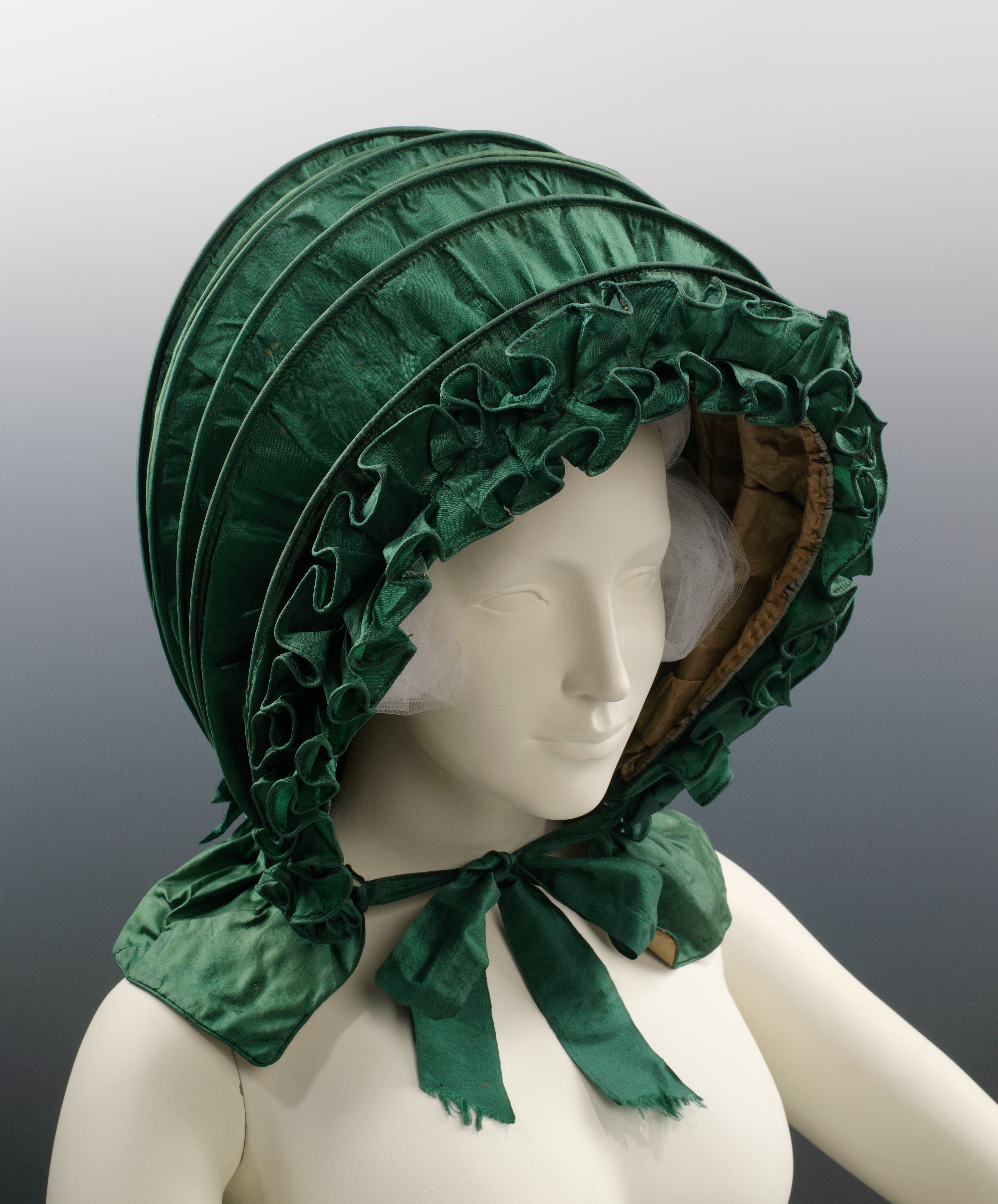 |
| Calash, 1790, American, Gift of the Brooklyn Museum, 2009.300.2889, Brooklyn Museum Costume Collection at The Metropolitan Museum of Art. |
Calash, 1820, American, Gift of the Brooklyn Museum, 2009.300.2015, Brooklyn Museum Costume Collection at The Metropolitan Museum of Art. |
Interestingly, the Museum of Fine Arts in Boston houses an almost identical bonnet in its collection! The original ribbons of the MFA's bonnet remarkably survive, allowing us to view the accessory's original appearance. During the 1810s and 1820s, a resurgence in Renaissance and Medieval motifs manifested itself in clothing and both headpieces provide the perfect example of this trend with their decorative puffs.
During winter, these bonnets kept their wearers warm with their natural wind-breaker characteristics, wool batting, and face-shielding brim. May you be as toasty in your own seasonal wardrobe this upcoming year!
 |
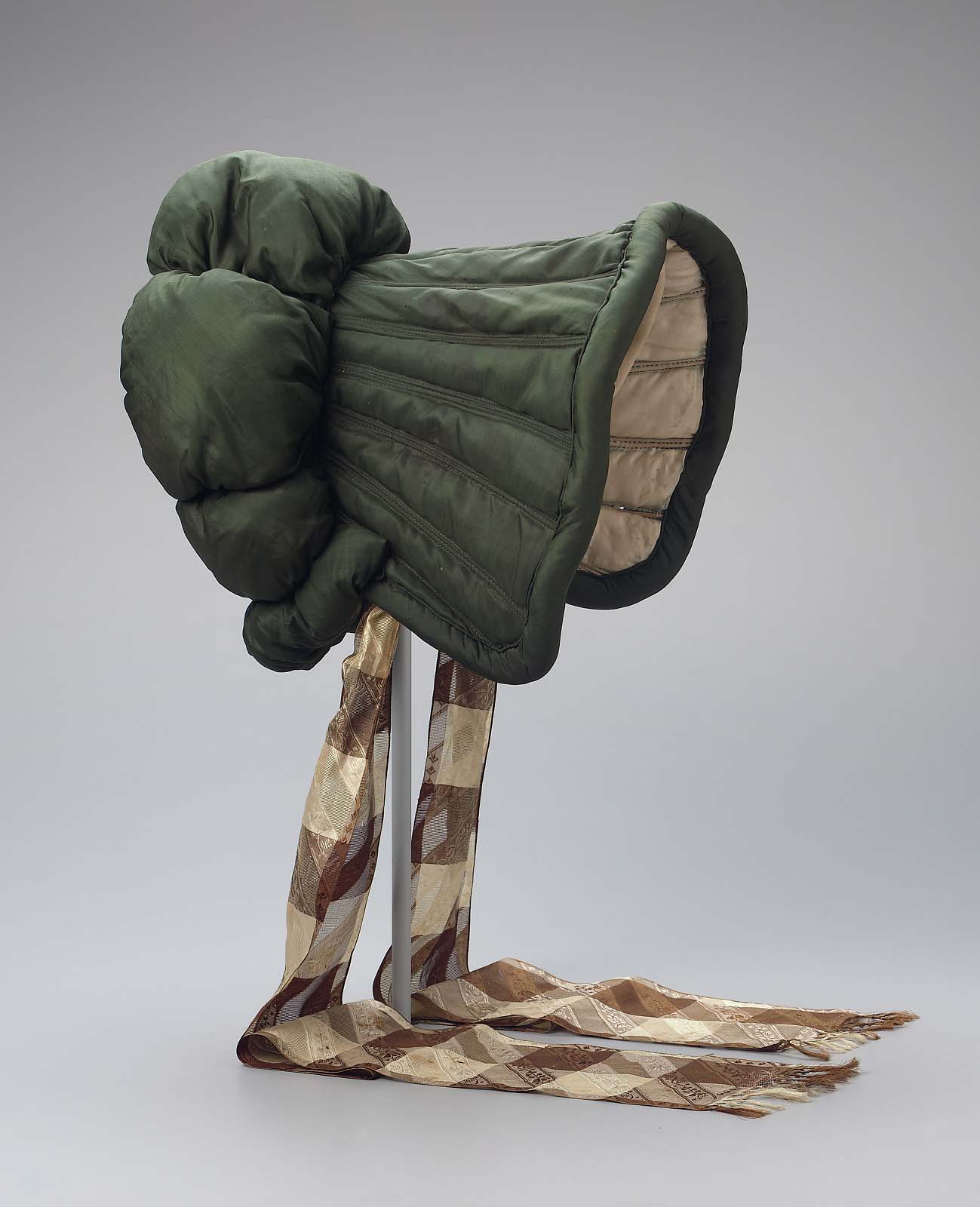 |
| Bonnet, Probably American, 1820s, Gift of Mrs. Harold Holmes Wren, 1953.80.1, Maryland Historical Society. |
Bonnet, Probably American, 1825, Gift of Mrs. Henry P. Kendall, 64.1607, Museum of Fine Arts in Boston. |
References:
Calahan, April. Fashion Plates: 150 Years of Style. New Haven: Yale University Press, 2015.
Ladies' Pocket Magazine.
Metropolitan Museum of Art. “1790 Calash.” https://www.metmuseum.org/art/collection/search/157763
Metropolitan Museum of Art. “1820 Calash.” https://www.metmuseum.org/art/collection/search/156795
Museum of Fine Arts Boston. “Bonnet.” https://www.mfa.org/collections/object/bonnet-116615
Smithsonian. Fashion: The Definitive History of Costume and Style. New York: Dorling Kindersley, 2012.
New Call-to-action

